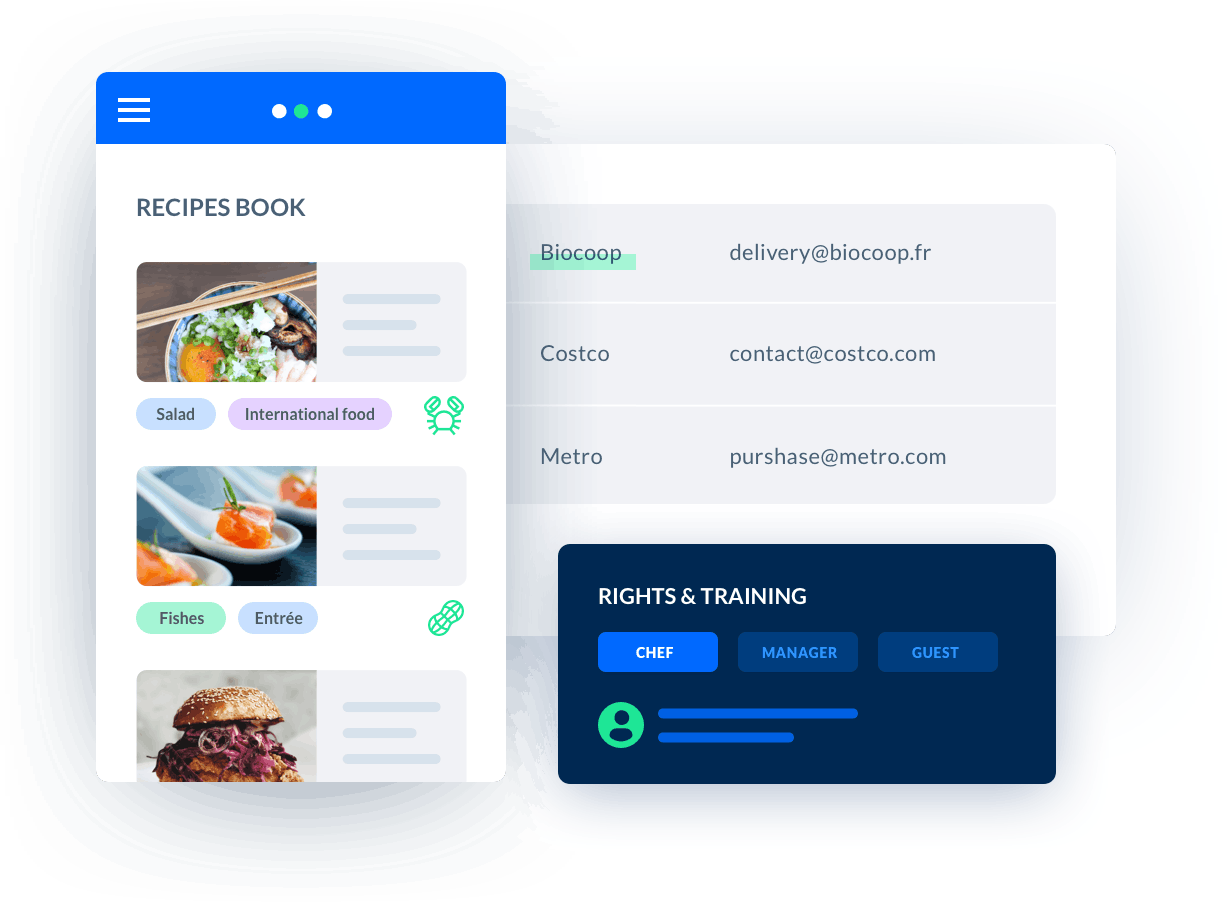how to calculate price per serving
How to calculate price per servingIn the catering industry, determining the price per serving is crucial for maintaining profitability and ensuring competitive pricing.Whether you run a restaurant, catering service, or any other food-related business, understanding how to calculate the price per serving is essential.

Melba : Features related to menu engineering
Discover melba's features related to menu engineering

Better manage your recipe knowledge with data sheets: everything you need to know
How to better manage its knowledge recipe
How to calculate price per serving
In the catering industry, determining the price per serving is crucial for maintaining profitability and ensuring competitive pricing. Whether you run a restaurant, catering service, or any other food-related business, understanding how to calculate the price per serving is essential. In this article, we will provide you with a step-by-step guide on how to accurately determine the price per serving for your food items.
Factors to Consider
Before diving into the calculations, it's important to consider certain factors that influence the price per serving. These factors include:
- Cost of ingredients
- Overhead expenses
- Labor costs
- Profit margin
- Portion size
Cost of Ingredients
The cost of ingredients forms the foundation of your price per serving calculation. Start by determining the cost of each ingredient used in a particular recipe. Include all ingredients, from the main components to the smallest spices and seasonings. Keep track of the quantities used and their respective costs. This will help you determine the total cost of ingredients per recipe.
Overhead Expenses
Overhead expenses encompass various costs associated with running your business. These may include rent, utilities, insurance, licenses, permits, marketing, and other administrative expenses. To calculate the overhead cost per serving, divide the total monthly overhead expenses by the average number of servings per month.
Labor Costs
Labor costs involve the wages or salaries you pay to your staff members involved in food preparation, serving, and other related tasks. Calculate the labor cost per serving by dividing the total monthly labor expenses by the average number of servings per month.
Profit Margin
Determining your desired profit margin is crucial for setting the right price per serving. Consider the industry standards and your business goals when deciding on a profit margin. It's generally recommended to aim for a profit margin between 5% and 10%. To calculate the profit margin, subtract the total costs (ingredients, overhead, and labor) from the desired revenue, and divide it by the desired revenue. Multiply the result by 100 to get the percentage.
Portion Size
The portion size plays a significant role in pricing. Determine the average serving size for each dish and consider the expectations and preferences of your target audience. Larger portion sizes may require more ingredients and labor, resulting in higher costs per serving.
Calculating the Price per Serving
Now that we have discussed the factors influencing the price per serving, let's move on to the actual calculation. To calculate the price per serving, follow these steps:
- Add the cost of ingredients per recipe to the overhead cost per serving.
- Add the labor cost per serving to the total obtained in step 1.
- Multiply the result from step 2 by the profit margin percentage.
- Add the result from step 3 to the total obtained in step 2.
- Divide the final total by the number of servings in each recipe.
The resulting number will be the price per serving for your food item. Make sure to round it up to a reasonable value to ensure simplicity in pricing.
Additional Considerations
While the above calculation provides a general framework for determining the price per serving, it's essential to adapt it to your specific business needs. Consider the following additional factors:
- Market demand and competition: Research the market to understand the pricing trends and adjust your prices accordingly.
- Seasonal variations: Prices may vary based on the availability and cost of seasonal ingredients.
- Menu diversity: Different dishes may have varying ingredient costs and labor requirements, affecting the price per serving.
By considering these factors and regularly reviewing and adjusting your pricing strategy, you can ensure that your price per serving remains competitive and profitable in the ever-evolving catering industry.
In conclusion, calculating the price per serving is crucial for any catering professional. By carefully considering the cost of ingredients, overhead expenses, labor costs, profit margin, and portion size, you can accurately determine the price per serving. Remember to adapt the calculation to your specific business needs and market conditions, ensuring competitiveness and profitability in your food-related ventures.






